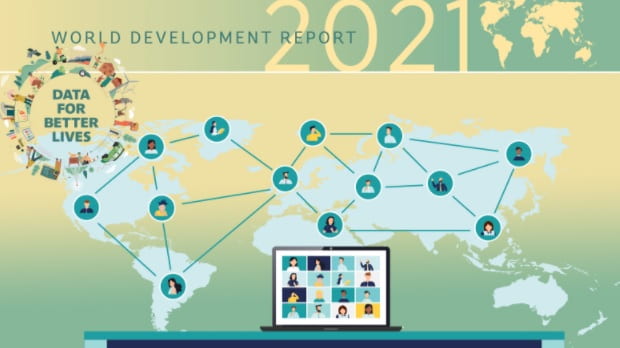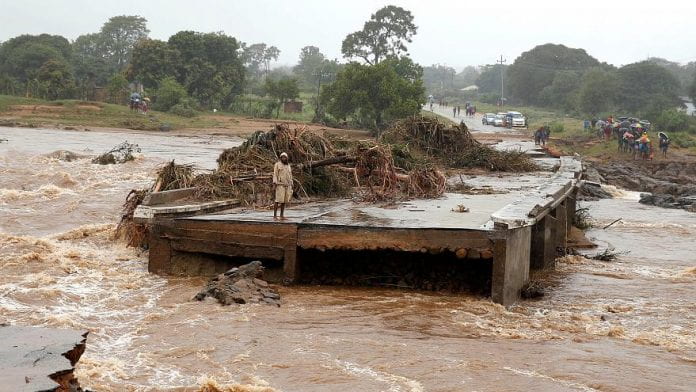
Every day, Alice watches with shock, at what was once her childhood playground, now just a pool of mud; the road that leads to it and the rest of the neighborhood, now close to non-existence. The Municipality of Chimanimani has done close to nothing post the 2019 floods and still, nothing has been said about the possible recurrence of the floods and action plans to the communities.
The impact of climate change on the development of cities in Sub-Saharan has reached a critical point. The last couple of years has seen an increase in the number of cyclones, floods, and droughts. This unprecedented scenario calls for improved and data-driven human settlement planning. This article is a response to the recently published World Bank Report World Development Report 2021: DATA FOR BETTER LIVES. The report highlights how data can be leveraged to make sound evidence-based policy decisions. It also provides recommendations on how such data can be used effectively to provide value. I reflect on how two African cities which have been greatly impacted by climate change disasters can leverage available climate data and create resilient cities and respond to climate disasters.
Chimanimani
 Image 1: Aftermath of Cyclone Idai (The Patriot)
Image 1: Aftermath of Cyclone Idai (The Patriot)
Chimanimani as a District is located in the South-Eastern border of Zimbabwe, boarded by Mozambique in the east. The town is experiencing extreme weather events such as flooding and cyclones, the latest hard-hitting being Cyclone Idai in 2019. This tropical cyclone resulted in a loss of lives, homes, and the destruction of public infrastructure such as roads, powerlines, and dams. Over 250,000 households were affected and most left homeless and stranded. This disaster was exacerbated by poor disaster response and management, an indication that existing plans for response are poorly structured and being mismanaged. In 2017, the Chimanimani Rural District Council drafted a Climate Change Management Policy, however, it is clear that this policy document did not translate into positive outcomes. Post-cyclone, a lot of data still exists and trends indicate that these tropical cyclones are most likely to happen.
Cape Town
 Image 2: The Theewaterskloof dam, Cape Town’s main water supply (Yale Environment 360)
Image 2: The Theewaterskloof dam, Cape Town’s main water supply (Yale Environment 360)
Cape Town on the other hand is the legislative capital of South Africa, located on the Southern coast of the country, it was confronted by a serious water shortage. In 2017 and 2018, water levels in the city reached a low of 15-30% dam capacity. ‘Day Zero’ was the name given to the day when tap water would shut off completely. This is a case of drought inflicted by climate change. A major global city would run out of municipal water and over 4 million people would be affected. This unprecedented water crisis in the region led the city administration and the whole community at large to try to figure out ways to avoid the ‘Day Zero’ scenario, however, the efforts were inadequate. The city needed immediate solutions. Despite collecting comparatively considerable revenue they still faced the drastic impacts of climate change. The last resort by the city administration was ad hoc and this proved less impactful.
Insights
The two areas; Chimanimani and Cape Town are two contrasting cities, in population density, income revenue, governance, and many other aspects. However, they both bore the brunt of climate change disasters. Data available on climate change from various sources could be a great resource to both cities. The Data for Better Lives speaks to Public intent data that can be used for better emergency response when disasters. An example of this is weather data, particularly weather forecasts. The good thing about a lot of this data is already integrated, analyzed, open-source, and presented in a way that planning institutions can use to anticipate and prepare for extreme events. Predictions and analyses of potentially recurring climate disasters should be at the core of the day-to-day planning of the two regions. However, this data can only be translated to policymaking or problem solving if it is shared, assimilated, or used to adjust model outputs. This means data analysts must play key roles in the various planning departments.
What to do with the data?
Of course, merely having data and information is not enough. The data has to be translated into action. The WDR 2021 gives an example of Odisha; a state in India that experienced a massive cyclone in 1999. Post the disaster the Odisha State Disaster Management Authority and the Government of Odisha, have made considerable efforts in developing weather forecast data and disaster response measures such that when another cyclone hit in 2013 only 38 people died compared to 10,000 the previous time.
Data should inform Chimanimani what path housing development should take, for example, investment in infrastructure like retaining walls on the foot of the mountains could help prevent settlements in the valley from experiencing the destruction experienced in 2019 from landslides. A well-coordinated managed retreat could go a long way in saving lives. As for Cape Town, long-term solutions for its water crisis must be at the center of the local authority’s budget and substantive plans. It is clear from various data sources that globally, weather patterns will continue to worsen unless drastic measures are put in place. Therefore, Cape Town, a bustling city, must be at the top of their data-driven planning, to ensure that they are not confronted with another Day Zero tragedy. Water is a human right and an essential part of our everyday life, as such it demands careful planning.
In conclusion, African cities are unfortunate to be experiencing the brunt of climate change in a tremendous way as compared to other regions across the world. However, governments and policymakers in the continent must take advantage of the vastly available data and literature on climate change trends and prepare adaptive emergency management and mitigation action plans for their cities to ensure that the cities withstand climate change-related disasters.
Cover Image Source: World Development Report 2021: DATA FOR BETTER LIVES